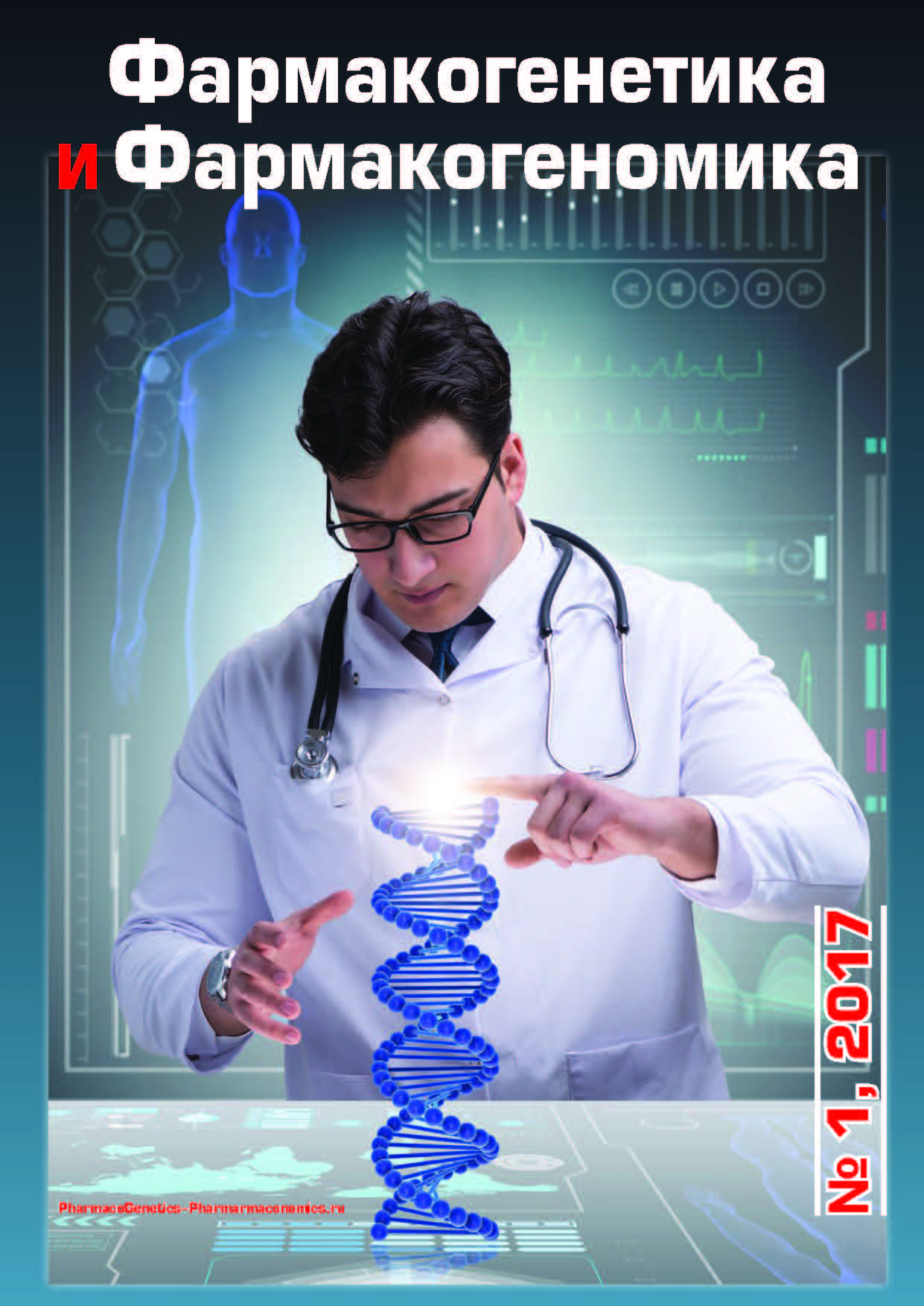No 1 (2017)
View or download the full issue
PDF (10,4 МБ) (Russian)
FROM EDITOR
CURRENT REVIEW
5-9 1115
Abstract
The article discusses the relevance of studying the mechanisms of obesity as a multidisciplinary problem. Variants of polymorphism of genes - candidates of excessive body weight and obesity, as well as associated states are described. The mechanisms of monogenic obesity, mutations of leptin - melanocortin system are analyzed. Genetic mechanisms of polygenic forms of obesity, polymorphic variants of lipid exchange genes, polymorphic variants of genes involved in the formation of food behavior, inclination to overeating, snacks, fatty acid metabolism, etc. are discussed. The approaches to personalization of practical recommendations for the prevention of obesity and metabolic syndrome in patients with a genetic predisposition are discussed. Overview of the approaches to choosing a personalized diet and exercise for this category of patients using genetic tests.
10-15 629
Abstract
Breast cancer remains one of the first leading causes of death in women, and currently endocrine treatment is of major therapeutic value in patients with estrogen-receptor positive tumors. The antiestrogen tamoxifen is extensively metabolized in patients to form a series of compounds with altered affinity for estrogen receptors (ERs), the primary target of this drug. Furthermore, these metabolites exhibit a range of partial agonist activity for ER in endometrium, which can lead to hyperplastic processes. Interindividual and interethnic variability of tamoxifen pharmacokinetics and pharmacodynamics is the cause of a variety of therapeutic response, mortality and survival rates. The role of enzymes for metabolism of tamoxifen I phase is actively being studied, but most researchers agree that the enzymes of the phase I and their metabolites only partially explain the mechanisms of the pathological response of patients to tamoxifen therapy. This article will focus on the sulfotransferases (SULT) and glucuronosyltransferases (UGT) - enzymes of the phase II metabolism of tamoxifen, whose family will be determined and also the clinically relevant polymorphism of the genes of these enzymes (SULT1A*2, SULT1A2*2, SULT1A2*3, UGT-48Val, UGT2B7-268Tyr, UGT2B15-523Thr).
16-20 862
Abstract
Until recently, for decades vitamin K antagonists have been the mainstay of anticoagulant therapy, but, notwithstanding the success that had been reached since the introduction, these medications have got some shortcomings. Since the advent of new oral anticoagulants on the pharmaceutical market, the opportunity to overcome the limitations of existing anticoagulant therapy has come. Dabigatran etexilate is a prodrug, p-glycoprotein substrate, which metabolism proceed through the CES enzymes family. In recent studies were proposed that genes’ polymorphisms, coding these enzymes, might associate with the reduction of dabigatran plasma concentration, and thus with the lower incidence of bleeding.
EVENTS
NEW TECHNOLOGIES
25-29 719
Abstract
The review focuses on the importance of glycoprotein-P for the effective and safe analgesic therapy of opioids in oncology. The importance of the effect of inter-drug interactions on glycoprotein-P activity in conditions of multicomponent palliative therapy is shown. The main substrates, inhibitors and inducers of glycoprotein-P, which have the most actual importance in clinical oncology, are presented. The role of MDR1 gene encoding for glycoprotein-P has been highlighted for the phenotypic variety of chronic pain and the profile of analgesic therapy safety. The key role for the clinical oncology and palliative medicine of the pharmacogenetic factors of the gene encoding glycoprotein-P in a personified approach to analgesic therapy is presented.
CASE STUDY
21-24 470
Abstract
Carrying of mutations in genes of liver drugs biotransformation increases the risk of developing adverce drugs reactions. Underestimation of the association of clinical manifestations with adverce drugs reactions and their interpretation as a manifestation of a major or new psychoneurological disease can lead to a «pharmacological cascade». This article presents a clinical case of the sequential development of adverce drugs reactions to each of the three prescribed antiepileptic drugs. An incorrect evaluation of adverce drugs reactions led to the unreasonable prescription of polytherapy with antiepileptic drugs and antipsychotics. The problem of identification of adverce drugs reactions and ways to improve the safety of pharmacotherapy of epilepsy are discussed.
ISSN 2588-0527 (Print)
ISSN 2686-8849 (Online)
ISSN 2686-8849 (Online)










































